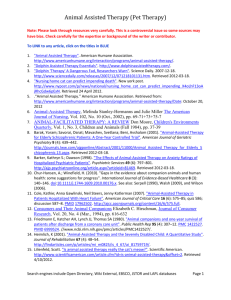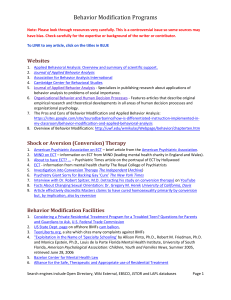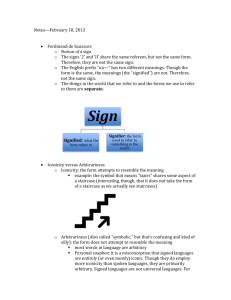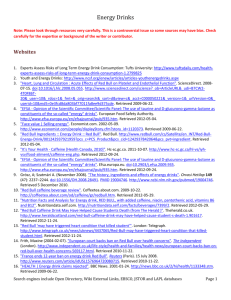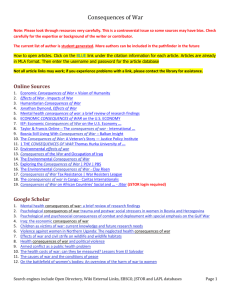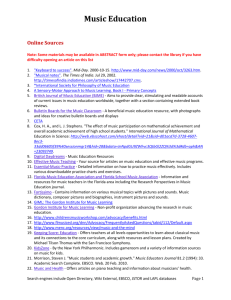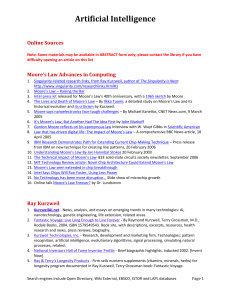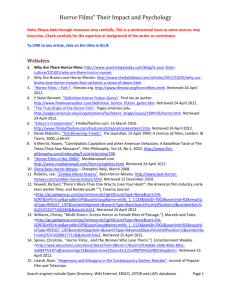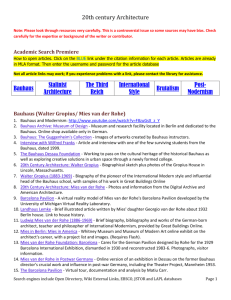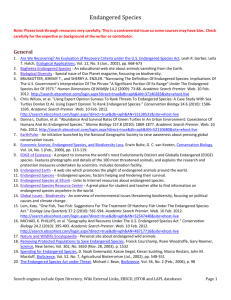Sign Language and Non-Verbal Communication
advertisement
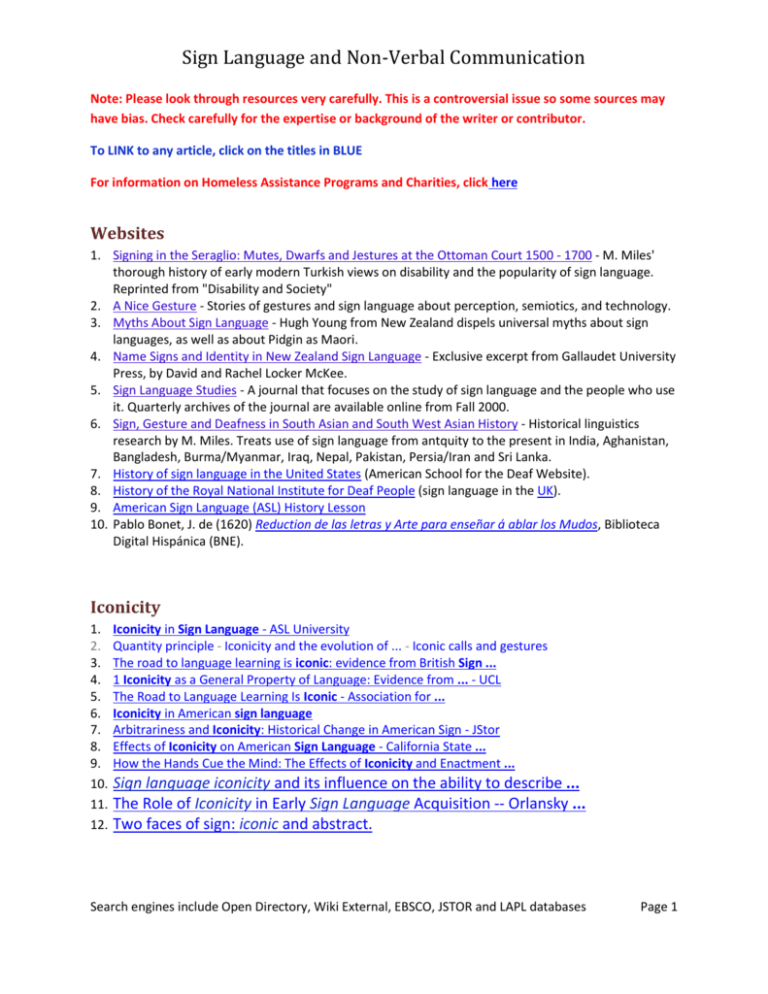
Sign Language and Non-Verbal Communication Note: Please look through resources very carefully. This is a controversial issue so some sources may have bias. Check carefully for the expertise or background of the writer or contributor. To LINK to any article, click on the titles in BLUE For information on Homeless Assistance Programs and Charities, click here Websites 1. Signing in the Seraglio: Mutes, Dwarfs and Jestures at the Ottoman Court 1500 - 1700 - M. Miles' thorough history of early modern Turkish views on disability and the popularity of sign language. Reprinted from "Disability and Society" 2. A Nice Gesture - Stories of gestures and sign language about perception, semiotics, and technology. 3. Myths About Sign Language - Hugh Young from New Zealand dispels universal myths about sign languages, as well as about Pidgin as Maori. 4. Name Signs and Identity in New Zealand Sign Language - Exclusive excerpt from Gallaudet University Press, by David and Rachel Locker McKee. 5. Sign Language Studies - A journal that focuses on the study of sign language and the people who use it. Quarterly archives of the journal are available online from Fall 2000. 6. Sign, Gesture and Deafness in South Asian and South West Asian History - Historical linguistics research by M. Miles. Treats use of sign language from antquity to the present in India, Aghanistan, Bangladesh, Burma/Myanmar, Iraq, Nepal, Pakistan, Persia/Iran and Sri Lanka. 7. History of sign language in the United States (American School for the Deaf Website). 8. History of the Royal National Institute for Deaf People (sign language in the UK). 9. American Sign Language (ASL) History Lesson 10. Pablo Bonet, J. de (1620) Reduction de las letras y Arte para enseñar á ablar los Mudos, Biblioteca Digital Hispánica (BNE). Iconicity 1. 2. 3. 4. 5. 6. 7. 8. 9. 10. 11. 12. Iconicity in Sign Language - ASL University Quantity principle - Iconicity and the evolution of ... - Iconic calls and gestures The road to language learning is iconic: evidence from British Sign ... 1 Iconicity as a General Property of Language: Evidence from ... - UCL The Road to Language Learning Is Iconic - Association for ... Iconicity in American sign language Arbitrariness and Iconicity: Historical Change in American Sign - JStor Effects of Iconicity on American Sign Language - California State ... How the Hands Cue the Mind: The Effects of Iconicity and Enactment ... Sign language iconicity and its influence on the ability to describe ... The Role of Iconicity in Early Sign Language Acquisition -- Orlansky ... Two faces of sign: iconic and abstract. Search engines include Open Directory, Wiki External, EBSCO, JSTOR and LAPL databases Page 1 Sign Language and Non-Verbal Communication Morphology 1. 2. 3. 4. 5. 6. 7. 8. 9. 10. 11. THE PARADOX OF SIGN LANGUAGE MORPHOLOGY A few basics of American Sign Language (ASL) Linguistics Noun morphology in Italian Sign Language (LIS) Morphological universals and the sign language type* - UC San Diego A Morphological Analyzer for Verbal Aspect In American Sign ... The typological classification of sign language morphology Handling vs Instrument: a crosslinguistic study of sign language ... Sign language Chapter 2 Models of signed language phonology and morphology ASL / Sign Language Morphology - Handspeak Differences in the Use of American Sign Language Morphology by ... 12. THE PARADOX OF SIGN LANGUAGE MORPHOLOGY. Non-Verbal Communication 1. 2. 3. 4. 5. "Credibility, Respect, and Power: Sending the Right Nonverbal Signals" by Debra Stein Online Nonverbal Library with more than 500 free available articles on this topic. The Nonverbal Dictionary of Gestures, Signs & Body Language Cues by David B. Givens "Psychology Today Nonverbal Communication Blog posts" by Joe Navarro "NVC Portal - A useful portal providing information on Nonverbal Communication" Google Scholar Sign language structure: An outline of the visual communication systems of the American deaf Visual Recognition of American Sign Language Using Hidden Markov Models. Children creating language: How Nicaraguan Sign Language acquired a spatial grammar On the autonomy of language and gesture: Evidence from the acquisition of personal pronouns in American Sign Language Impact of early deafness and early exposure to sign language on the cerebral organization for motion processing Non-verbal communication Non-verbal communication. Search engines include Open Directory, Wiki External, EBSCO, JSTOR and LAPL databases Page 2 Sign Language and Non-Verbal Communication How to open articles. Click on the BLUE link under the citation information for each article. Articles are already in MLA format. Then enter the username and password for the article database JSTOR Advanced Search for full text articles on “sign language” iconicity and morphology: http://www.jstor.org/action/doAdvancedSearch?q0=%22sign+language%22+iconicity+morphol ogy&f0=all&c1=AND&q1=&f1=all&acc=on&fc=off&Search=Search&ar=on&sd=&ed=&la=&pt= &isbn=. (list results are 44; choose articles that apply closely to your topic) Academic Search Premiere 1. Arik, Engin. "Space, Time, And Iconicity In Turkish Sign Language (Tid)." TRAMES: A Journal Of The Humanities & Social Sciences 16.4 (2012): 345-358. Academic Search Premier. Web. 16 Apr. 2013. http://search.ebscohost.com/login.aspx?direct=true&db=aph&AN=83754724&site=ehost-live 2. Hohenberger, Annette. "The Word In Sign Language: Empirical Evidence And Theoretical Controversies." Linguistics 46.2 (2008): 249-308. Academic Search Premier. Web. 16 Apr. 2013. http://search.ebscohost.com/login.aspx?direct=true&db=aph&AN=31243286&site=ehost-live 3. Sonesson, Göran. "From Mimicry To Mime By Way Of Mimesis: Reflections On A General Theory Of Iconicity." Sign Systems Studies 38.1/4 (2010): 18-66. Academic Search Premier. Web. 16 Apr. 2013. http://search.ebscohost.com/login.aspx?direct=true&db=aph&AN=63194464&site=ehost-live 4. Miller, Margery. "SIGN ICONICITY AND RECEPTIVE VOCABULARY TESTING. (Cover Story)." American Annals Of The Deaf 152.5 (2008): 441-449. Academic Search Premier. Web. 16 Apr. 2013. http://search.ebscohost.com/login.aspx?direct=true&db=aph&AN=35001002&site=ehost-live 5. C., Stokoe, William. "Sign Language Structure." Annual Review Of Anthropology 9.(1980): 365-390. Academic Search Premier. Web. 16 Apr. 2013. http://search.ebscohost.com/login.aspx?direct=true&db=aph&AN=11237296&site=ehost-live 6. Namy, Laura L., Aimee L. Campbell, and Michael Tomasello. "The Changing Role Of Iconicity In NonVerbal Symbol Learning: A U-Shaped Trajectory In The Acquisition Of Arbitrary Gestures." Journal Of Cognition & Development 5.1 (2004): 37-57. Academic Search Premier. Web. 16 Apr. 2013. http://search.ebscohost.com/login.aspx?direct=true&db=aph&AN=12724071&site=ehost-live 7. Bencie Woll, et al. "Aphasia In A User Of British Sign Language: Dissociation Between Sign And Gesture." Cognitive Neuropsychology 21.5 (2004): 537-554. Academic Search Premier. Web. 16 Apr. 2013. http://search.ebscohost.com/login.aspx?direct=true&db=aph&AN=13713930&site=ehost-live 8. J. Matt Searls, et al. "When Is A Difference Really Different? Learners' Discrimination Of Linguistic Contrasts In American Sign Language." Language Learning 61.4 (2011): 1302-1327. Academic Search Premier. Web. 16 Apr. 2013. http://search.ebscohost.com/login.aspx?direct=true&db=aph&AN=67110401&site=ehost-live 9. Galvan, Dennis. "Differences In The Use Of American Sign Language Morphology By Deaf Children: Implications For.." American Annals Of The Deaf 144.4 (1999): 320-324. Academic Search Premier. Web. 16 Apr. 2013. http://search.ebscohost.com/login.aspx?direct=true&db=aph&AN=2611898&site=ehost-live 10. Wurtzburg, Susan, and Lyle Campbell. "North American Indian Sign Language: Evidence Of Its Existence Before European Contact." International Journal Of American Linguistics 61.2 (1995): 153. Search engines include Open Directory, Wiki External, EBSCO, JSTOR and LAPL databases Page 3 Sign Language and Non-Verbal Communication 11. 12. 13. 14. 15. 16. Academic Search Premier. Web. 16 Apr. 2013. http://search.ebscohost.com/login.aspx?direct=true&db=aph&AN=9510042721&site=ehost-live Morgan, Ruth. "Giving Voice To Silenced Lives: A South African Sign Language Oral History Project With The Deaf Community." S. A. Archives Journal 41.(1999): 41. Academic Search Premier. Web. 16 Apr. 2013. http://search.ebscohost.com/login.aspx?direct=true&db=aph&AN=5962137&site=ehostlive Senghas, Richard J., and Leila Monaghan. "SIGNS OF THEIR TIMES: Deaf Communities And The Culture Of Language." Annual Review Of Anthropology 31.1 (2002): 69-97. Academic Search Premier. Web. 16 Apr. 2013. http://search.ebscohost.com/login.aspx?direct=true&db=aph&AN=7392216&site=ehost-live\ Kageleiry, Jamie. "The Island That Spoke By Hand." Yankee 63.3 (1999): 48. Academic Search Premier. Web. 16 Apr. 2013. http://search.ebscohost.com/login.aspx?direct=true&db=aph&AN=1597979&site=ehost-live Banham, Debby. "Silence And Sign Language In Medieval Monasticism." Catholic Historical Review 95.1 (2009): 112-113. Academic Search Premier. Web. 16 Apr. 2013. http://search.ebscohost.com/login.aspx?direct=true&db=aph&AN=36126571&site=ehost-live Wolkomir, Richard, and Lynn Johnson. "American Sign Language: `It's Not Mouth Stuff--It's Brain Stuff.'." Smithsonian 23.4 (1992): 30. Academic Search Premier. Web. 16 Apr. 2013. http://search.ebscohost.com/login.aspx?direct=true&db=aph&AN=9207205895&site=ehost-live Mirzoeff, Nicholas. "The Silent Mind: Learning From Deafness." History Today 42.7 (1992): 19. Academic Search Premier. Web. 16 Apr. 2013. http://search.ebscohost.com/login.aspx?direct=true&db=aph&AN=9207203964&site=ehost-live Search engines include Open Directory, Wiki External, EBSCO, JSTOR and LAPL databases Page 4


